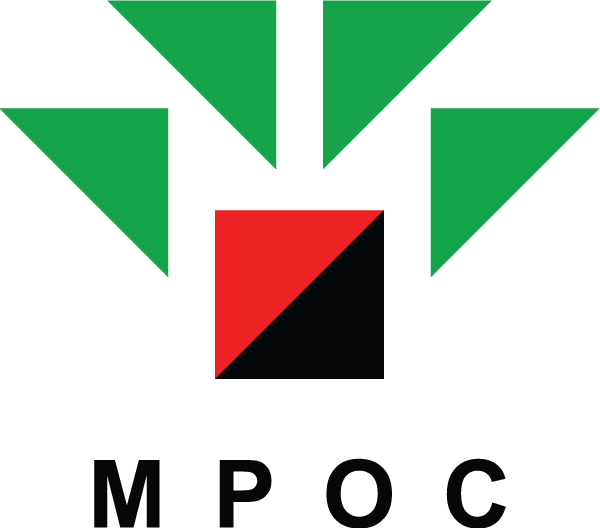Archive
2022
28 Mar - 01 Apr 2022
ASSESSING 2022: MANAGING OPPORTUNITIES AND RISKS
14 - 18 Nov 2022
MITIGATING THE NEXT WAVE OF MARKET UNCERTAINTIES
2021
05 - 11 Apr 2021
Section 1: Price Direction
•
Outlook of China Soybean Demand - A Critical Factor Influencing Palm Oil Demand and Supply in 2021
05 - 11 Apr 2021
Section 2 : Special Focus on the US
18 - 24 Oct 2021
Section 1: Oils & Fats Supply, Demand and Outlook
18 - 24 Oct 2021
Section 2: Opportunities for Palm Oil in Asian Market
2020
24 Feb - 01 Mar 2020
Section 1 : CPO Price Trend
24 Feb - 01 Mar 2020
Section 2: Global Palm Oil Market Opportunities
22 - 28 Jun 2020
POINTERS ON THE PRICE TRENDS
2019
18 - 24 Feb 2019
Section 1: CPO Price Trend
25 - 24 Feb 2019
Special Focus - India
19 - 25 Aug 2019
Section 1 : CPO Price Trend
19 - 25 Aug 2019
Section 2: Special Focus
2018
29 Jan - 04 Feb 2018
Section 1: CPO Price Trend
29 Jan - 04 Feb 2018
Section 2 : Global Palm Oil Market Focus
06 - 12 Aug 2018
Section 1: CPO Price Trend
06 - 12 Aug 2018
Section 2: Global Palm Oil Market Focus
2017
20 - 26 Feb 2017
Section 1: Price Directions
20 - 26 Feb 2017
Section 2: Market Challenges and Opportunities
21 - 27 Aug 2017
Section 1: Palm Oil Price Fundamentals
21 - 27 Aug 2017
Section 2: Regional Focus : CIS Countries
2016
22 - 29 Feb 2016
2016 Market Direction - Twists and Turns of Palm Oil Prices
22 - 28 Aug 2016
Section 1 : Palm Oil Price Fundamentals
22 - 28 Aug 2016
Section 2 : Trade Issues and Market Prospects
2015
23 Feb - 01 Mar 2015
Opportunities, Challenges And Trend In 2015 CPO Price
17 - 23 Aug 2015
Second Half 2015 - Anticipating Market Price Direction
17 - 23 Aug 2015
Special Focus: Indian Sub-Continent
2014
17 - 24 Feb 2014
Anticipating 2014 Palm Oil Price Direction
25 - 31 Aug 2014
2nd Half 2014: Market Challenges, Predictions And Directions
2013
18 - 27 Feb 2013
Mapping The Palm Oil Price - 2013 Market Perspective
22 - 29 Jul 2013
Prospects For Second Half Of 2013 - Managing Price Fluctuations
2012
13 - 20 Feb 2012
2012 Price Direction, Issues & Challenges
•
06 - 17 Aug 2012
Palm Oil : Challenges, Opportunities And Latest Market Directions
2011
07 - 17 Feb 2011
Challenges, Opportunities And Price Direction
08 - 16 Aug 2011
Challenges, Opportunities And Latest Price Trend
2010
02 - 08 Aug 2010
2010 Year End Prospects - What Lies Ahead?
Login
Error
Reset Password

Error
Register

Error

POINTERS
LOGIN /
REGISTER




ORGANIZED BY:

Section 1: Price Direction:
Outlook of China Soybean Demand - A Critical Factor Influencing Palm Oil Demand and Supply in 2021

Mr. Cai Neng Bin
He is the General Manager of Shanghai Pansun Company. His roles and responsibilities in the company are analyzing oilseeds and oils and fats market information, with main emphasis given on systematic data analysis and make judgement on market trading pattern. He is also able to gauge the change of medium to long market trends of agricultural products, and provides trading and hedging strategies through capturing price differences arises from logical error within markets, and between different products and months.
VIEW PROFILE
Current Developments
A) Trade relations between China and USA eased and China’s soybean imports increases.
a. Recovery in swine production increases the demand for soybeans in China.
b. China will fulfill its trade agreements with USA to enhance US soybean imports substantially.
c. China’s purchasing pace affects the supply and demand of soybean in North and South America when season changes.
d. Brazil’s soybean harvest and logistics delays have postponed supply pressure, tightening the supply of US soybeans in short-term.
B) Prevention and control on African Swine Fever (ASF) still affect China’s soybean crushing volume.
a. Swine breeding industry has improved with policy support.
b. Changes in the new situation of African Swine Fever (The prevention and treatment of ASF is a tremendous task in a long run, including scientific R&D and application of vaccines. Virus mutations as well as rebound of the pandemic slows down the pace of recovery of swine breeding.)
C) Supply-side reduction intensifies the tension between China’s oils & fats supply and demand.
a. Multiple factors lead to a structural change in China’s oils & fats supply and demand.
b. With the impact of COVID-19 and trade tension between foreign countries, China has enhances its attention to the safety of agricultural products supplies.
c. Increase in demand and decrease in supply lead to a low level of inventory which will take longer to rebuild.
D) Tight supply pushes up prices.
a. Tight supply in global oils & fats is spreading to other commodities.
b. Tight oils & fats supply is reflected in high basis and monthly difference
c. Tight supply in China’s oils & fats market as a result of the national reserve of soybean oil, import restrictions on rapeseed and reduction in sunflower oil production.
d. The price difference reflects the difference of supply shortage among oil varieties in the short term.
E) China’s palm oil imports and consumption still have potential for growth.
a. Palm oil import situation and influencing factors.
b. The balance between expectations on palm oil inventory change and the price.
c. Evaluation on palm oil consumption and widening discount promote palm oil consumption.
Outlook
• Economic recovery under the control of the pandemic across the world, and expectation on demand for oils & fats is increasing.
• Reduction in the production of many types of oils & fats has caused supply shortage of global oils & fats. It is expected to take more time to rebuild the inventory level.
• The core of the trade is driven by inventory level and expectations on recovery. The imbalance between supply and demand is strongly repaired through the price spread structure.
• Increased palm oil production eases the supply shortage, and pressure on short-term inventory rebuilding is not heavy.
Conclusion - The tight supply is difficult to ease during this year and the fluctuation of oils & fats is strong, which drives the price of the next month to rebound and upwards.
A) Trade relations between China and USA eased and China’s soybean imports increases.
a. Recovery in swine production increases the demand for soybeans in China.
b. China will fulfill its trade agreements with USA to enhance US soybean imports substantially.
c. China’s purchasing pace affects the supply and demand of soybean in North and South America when season changes.
d. Brazil’s soybean harvest and logistics delays have postponed supply pressure, tightening the supply of US soybeans in short-term.
B) Prevention and control on African Swine Fever (ASF) still affect China’s soybean crushing volume.
a. Swine breeding industry has improved with policy support.
b. Changes in the new situation of African Swine Fever (The prevention and treatment of ASF is a tremendous task in a long run, including scientific R&D and application of vaccines. Virus mutations as well as rebound of the pandemic slows down the pace of recovery of swine breeding.)
C) Supply-side reduction intensifies the tension between China’s oils & fats supply and demand.
a. Multiple factors lead to a structural change in China’s oils & fats supply and demand.
b. With the impact of COVID-19 and trade tension between foreign countries, China has enhances its attention to the safety of agricultural products supplies.
c. Increase in demand and decrease in supply lead to a low level of inventory which will take longer to rebuild.
D) Tight supply pushes up prices.
a. Tight supply in global oils & fats is spreading to other commodities.
b. Tight oils & fats supply is reflected in high basis and monthly difference
c. Tight supply in China’s oils & fats market as a result of the national reserve of soybean oil, import restrictions on rapeseed and reduction in sunflower oil production.
d. The price difference reflects the difference of supply shortage among oil varieties in the short term.
E) China’s palm oil imports and consumption still have potential for growth.
a. Palm oil import situation and influencing factors.
b. The balance between expectations on palm oil inventory change and the price.
c. Evaluation on palm oil consumption and widening discount promote palm oil consumption.
Outlook
• Economic recovery under the control of the pandemic across the world, and expectation on demand for oils & fats is increasing.
• Reduction in the production of many types of oils & fats has caused supply shortage of global oils & fats. It is expected to take more time to rebuild the inventory level.
• The core of the trade is driven by inventory level and expectations on recovery. The imbalance between supply and demand is strongly repaired through the price spread structure.
• Increased palm oil production eases the supply shortage, and pressure on short-term inventory rebuilding is not heavy.
Conclusion - The tight supply is difficult to ease during this year and the fluctuation of oils & fats is strong, which drives the price of the next month to rebound and upwards.
REGISTER OR LOGIN TO VIEW FULL REPORT
REGISTER OR LOGIN TO VIEW PRESENTATION SLIDES
Questions & Answers
Please login to post comments.
Facebook SDK returned an error: